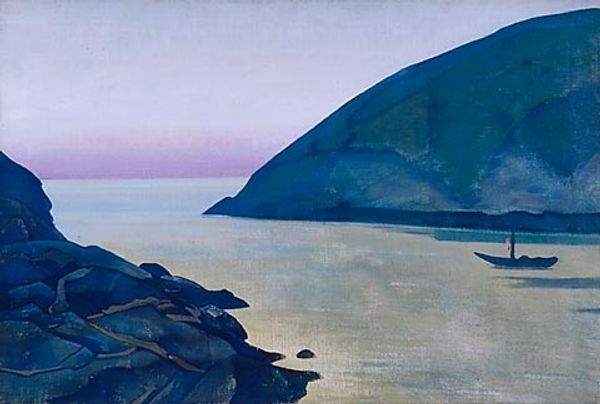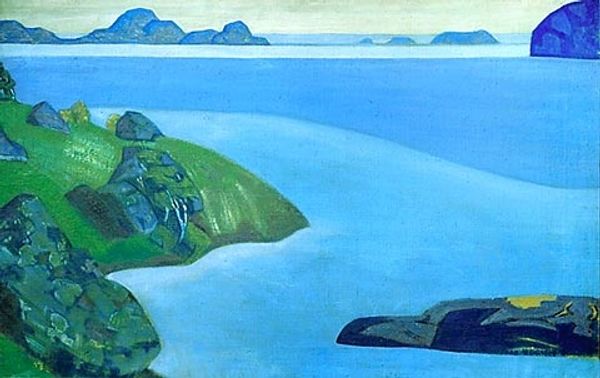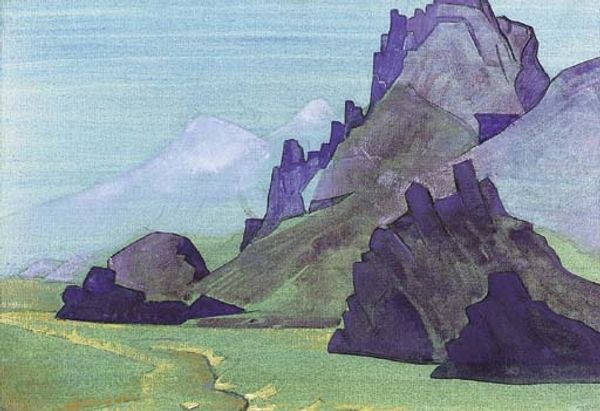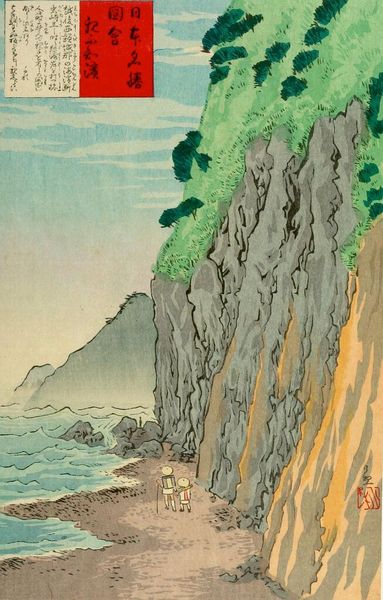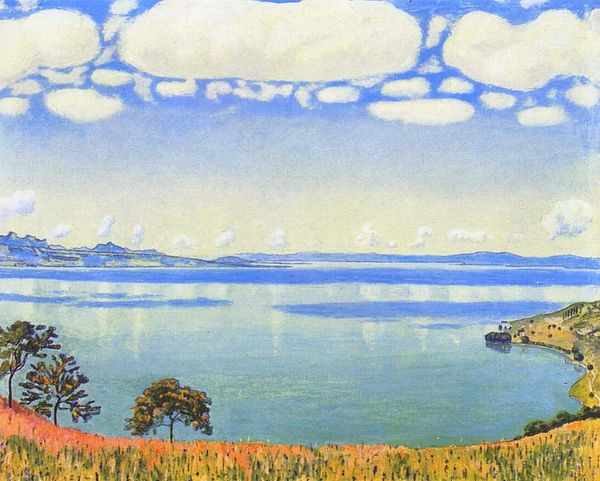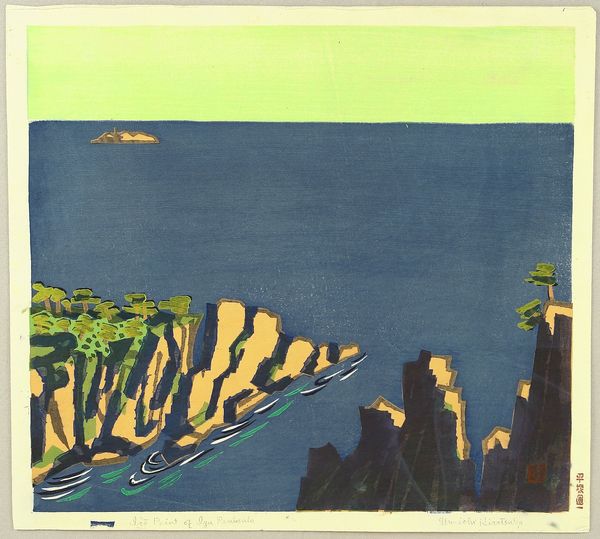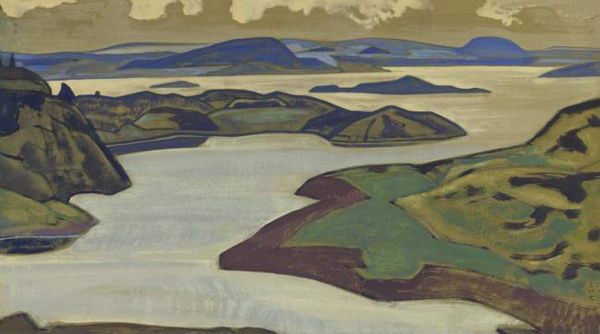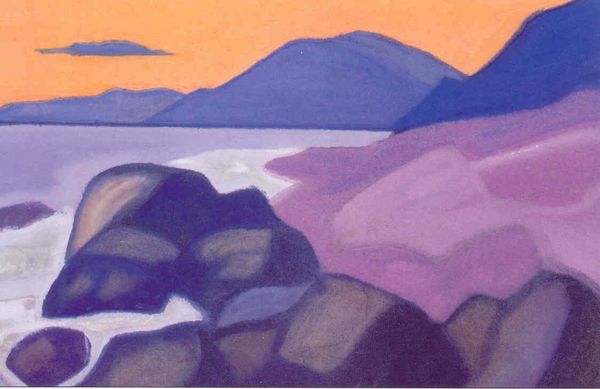
Copyright: Public domain
Editor: This is "Monhegan (Fairytale)" painted in 1922 by Nicholas Roerich, in oil. I find it striking how simplified the forms are, especially the rocks and the lone tree on the cliff. It almost feels like a stage set. What do you make of the composition? Curator: Precisely. The simplified forms speak volumes. Note how Roerich uses distinct, almost geometric shapes to define the rocks, the sea, and even the sky. This isn’t merely a representation of a landscape; it’s a study in form. The placement of the tree, a stark vertical element, anchors the composition while drawing the eye upwards. What about the colors; what do they evoke in you? Editor: The muted purples and greens, against the pale pink sky... it gives a sense of calm, almost otherworldly serenity. Curator: Consider that further: The limited palette emphasizes the essential qualities of the landscape, stripping away superfluous detail. It creates a sense of depth and volume through tonal variation, not through explicit details. Ask yourself, what does this paring-down of detail accomplish in conveying an atmospheric view? Editor: It directs our attention to shapes and the relationship between them. It's less about a realistic depiction and more about feeling. It's interesting how Roerich uses form and color so minimally to convey this ethereal mood. Curator: Indeed, one might even say the technique approaches abstraction, moving away from the concrete representation of a place. Roerich prompts us to engage not with what is literally there, but with a meditation on form and color themselves. Editor: I see it so differently now, having looked closer at how form and color work here. I initially perceived a landscape; now, I notice its structural underpinnings. Curator: Exactly. That deeper observation is essential to fully appreciate it.
Comments
No comments
Be the first to comment and join the conversation on the ultimate creative platform.

